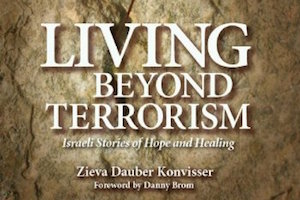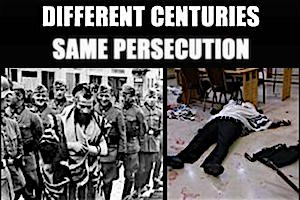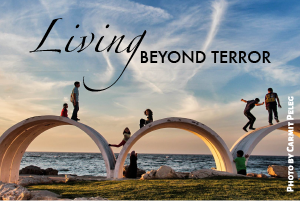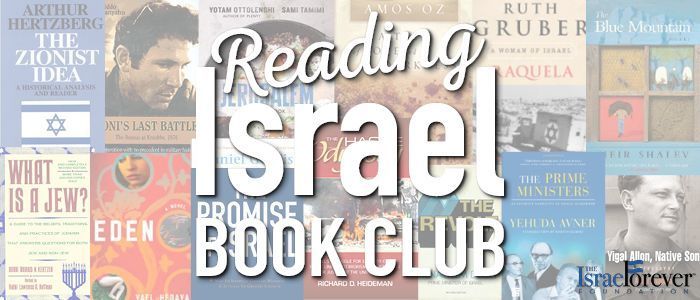Living Beyond Terrorism: Israeli Stories of Hope and Healing
by Zieva Lynn Dauber Konvisser
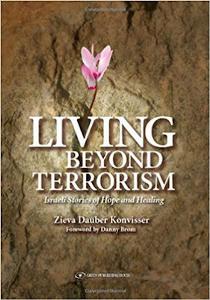
Living Beyond Terrorism examines “politically motivated violence” during the Second Intifada from numerous angles and is divided into two sections. The first six chapters cover locations in Israel where terrorist attacks took place through the eyes of their survivors. The second five chapters cover thematic concepts like personal injury and loss and mothers’ perspectives on the loss of their children.
Dr. Konvisser selected a narrative approach to her research, giving voice to the individual “stories” – oral histories or testimonies - as a way to humanize people whose lives have been destroyed, to help them heal, as a gift to them and their families, and as a legacy for others to remember and learn from their experiences.
The image on the front cover of the book of the fragile rakefet or cyclamen flower pushing up through the crack in the hard stone wall and symbolizing rebirth and new growth reflects the thematic reality of this book. Though it is a collection of stories that encompass the most horrifying evils, it is still a book about life. It is a book about living. It is a book about finding the courage and resistance to continue on despite and in spite of the world around us.
The individuals in this book are otherwise ordinary people performing ordinary activities—Jews, Christians, Muslims, and Druze riding in buses, dining in restaurants, shopping in markets, studying at college, visiting hotels, or walking on the street—who suddenly become victims of suicide bombings, shooting attacks, and rocket attacks. Their responses and coping mechanisms ranged widely. A minority experienced difficulties that linger and disrupt their ability to function. Most coped successfully with difficult situations, recovering within a short period of time, and functioning normally, although they may continue to experience some concomitant distress as well.
In struggling to make sense of the event, they realize a greater appreciation of their existence in the world, along with a sense of reordered priorities. They manifest growth as warmer, more intimate relationships with others or with God; recognition of new possibilities for life; a greater sense of personal strength; spiritual and existential change; a greater appreciation of what is really important and meaningful versus what is trivial; and a better understanding of who they really are.
Each story is unique and there is no right or wrong way for dealing with these crises – or any life crisis. The people in this book who have survived and thrived share some common qualities – ones that we may cultivate to master any crisis. Twelve common qualities or themes evolved from these stories:
• Struggling, confronting, and ultimately integrating painful thoughts and emotions
• Adjusting future expectations to fit the new reality and focusing on the important things in life
• Calling on inner strength, core beliefs, and values
• Staying in control and not falling apart
• Moving forward with strength gained from past experiences and prior adversity
• Grappling with fundamental existential questions through religion and spirituality
• Staying healthy and focusing on body image
• Finding the silver lining and creatively giving back—moving forward with action
• Staying connected and seeking outside resources to help survive rough times
• Telling their stories and making sense of their lives
• Being hopeful, optimistic, and celebrating life
• Discovering who they are

DISCUSSION QUESTIONS
- Do you think these stories from the Second Intifada are still relevant and important to share ten or more years later and if so, why?
- What lessons can we learn from these survivors that we might cultivate to master any crisis in our own lives?
- Which of these resonate with how you might address adversity in your life?
- What lessons can you learn from these bereaved family members and how they have responded to their grief and pain?
- What are some of the strategies that the bereaved families in the book used to educate people on how to behave with survivors and bereaved family members and how might you apply these in your own lives?
- What practices do you or might you follow to commemorate the loss of your loved ones, as well as those who have fallen protecting the Jewish homeland?
- Do you have a preparedness plan for your family or community in case of an emergency or disaster
- Do you help your family build resilience as a unit or individually?
- What is your favorite selection from the book and why?
- Is Living Beyond Terrorism a book you would recommend, why, and to whom?
READ MORE
DISCUSSION LEADER’S GUIDE
- What lessons can you learn from these bereaved family members and how they have responded to their grief and pain?
For parents, there is no greater grief than losing a child; but when a child dies suddenly as the result of a terrorist attack or in the service of one’s country, it is the parent’s worst nightmare. There is no time to prepare for the worst or somehow make their farewells. The parents in Living Beyond Terrorism may have had a very difficult time in finding closure; yet some have demonstrated incredible resilience, strength, and determination. They have turned their grief into doing good for others, turning the most negative episode in their lives into something infinitely positive. They have responded to pain and suffering by building, growing, making meaning out of suffering, and choosing life. They have learned how to “live next to” and “move forward with” their feelings of grief, pain, and helplessness
To fill the big holes in their hearts created by their losses, these parents have channeled their grief, pain, anger, and helplessness into life-affirming activities of remembrance, education, and activism, honoring the memories of their beloved children and truly making a difference in their lives and the lives of others. They have found meaning in their suffering by creating foundations to help other families and by speaking out to educate others and build public awareness about the impact of terrorism. Through these acts of healing others, over time, these bereaved parents heal their own hearts and souls, and leave a legacy for future generations.
- What are some of the strategies that the bereaved families in the book used to educate people on how to behave with survivors and bereaved family members and how might you apply these in your own lives?
Many of the bereaved family members echoed similar experiences: “Some people see me in the street and go to the other side. And this is the biggest humiliation that you can get. They don’t know how to behave or how to make contact. I think in a country like Israel that has seen so many piguim [terror attacks] and so much pain and with soldiers in the army, people have to know how to react.”
- What practices do you or might you follow to commemorate the loss of your loved ones, as well as those who have fallen protecting the Jewish homeland?
Commemoration, the creation of memorials, can be a significant part of the bereavement process as it continues the commitment to a loved one after his or her death in a world that has been challenged by loss. Furthermore, commemoration helps us to bear witness and leave a legacy so that the victims and the survivors will not be forgotten. As so eloquently expressed by Elie Wiesel, Holocaust survivor, Nobel Poet Laureate, and Founding Chairman of the United States Holocaust Memorial Museum: “Not only are we responsible for the memories of the dead, we are also responsible for what we are doing with those memories.” And as engraved in stone at the Museum’s entrance – “For the dead and the living we must bear witness.”
In Israel, the commemoration process is known as hantzacha, which means perpetuation or immortalization, and has been described as remembering. It may be spontaneous, as in the placing of flowers, pictures, and memorial candles at the site of a terrorist attack, or in the handwritten messages of love and remembrance painted on nearby stone walls. Later, the family and friends of the person who died may design and fund private commemoration at the place of the attack, in schools or playgrounds, on the internet, in the synagogues, and elsewhere, allowing people who never met the fallen to know something about them and, more importantly, to remember them. Finally, public municipal and state commemoration allows the society as a whole to mourn and remember, for example at the national cemetery at Mount Herzl in Jerusalem on Yom Hazikaron (Israel’s national memorial day for the fallen soldiers and the victims of terror).
The Reading Israel Book Club's Book of the Month
Every month, the Reading Israel Book Club at Israel Forever brings you a new literary delight to grow your Israel connection through the written word.
We hope that you enjoy our selections and participate in discussion not only with your friends and family but with an international community of readers in our open discussion group on Facebook.

